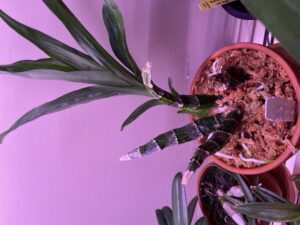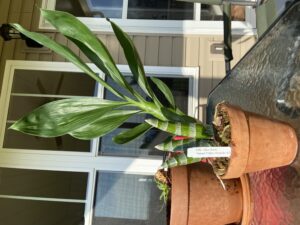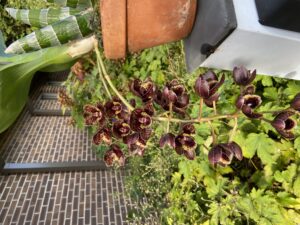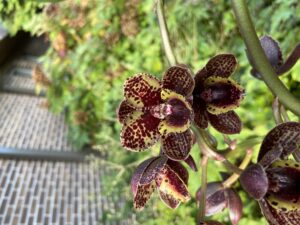Catasetum Orchids Through the Year
go.ncsu.edu/readext?963671
en Español / em Português
El inglés es el idioma de control de esta página. En la medida en que haya algún conflicto entre la traducción al inglés y la traducción, el inglés prevalece.
Al hacer clic en el enlace de traducción se activa un servicio de traducción gratuito para convertir la página al español. Al igual que con cualquier traducción por Internet, la conversión no es sensible al contexto y puede que no traduzca el texto en su significado original. NC State Extension no garantiza la exactitud del texto traducido. Por favor, tenga en cuenta que algunas aplicaciones y/o servicios pueden no funcionar como se espera cuando se traducen.
Português
Inglês é o idioma de controle desta página. Na medida que haja algum conflito entre o texto original em Inglês e a tradução, o Inglês prevalece.
Ao clicar no link de tradução, um serviço gratuito de tradução será ativado para converter a página para o Português. Como em qualquer tradução pela internet, a conversão não é sensivel ao contexto e pode não ocorrer a tradução para o significado orginal. O serviço de Extensão da Carolina do Norte (NC State Extension) não garante a exatidão do texto traduzido. Por favor, observe que algumas funções ou serviços podem não funcionar como esperado após a tradução.
English
English is the controlling language of this page. To the extent there is any conflict between the English text and the translation, English controls.
Clicking on the translation link activates a free translation service to convert the page to Spanish. As with any Internet translation, the conversion is not context-sensitive and may not translate the text to its original meaning. NC State Extension does not guarantee the accuracy of the translated text. Please note that some applications and/or services may not function as expected when translated.
Collapse ▲Catasetum type orchids are a very unique group of orchids. This group contains 4 separate genera Catasetum, Clowesia, Mormodes, and Cycnoches and all their hybrids. Native to Central America to South America they are used to tropical climates with a defined wet-dry season. The plants are epiphytic in nature growing commonly in the crooks of palm trees. These plants all share similar ecologies and growing habits which is why they are commonly lumped together.
The ecology of the group leads it to be a somewhat challenging group to grow. These plants grow rapidly during the growing season and go completely dormant in winter. During the dormancy these plants require absolutely no water. Water during this time can lead to rot and could ultimately lead to death of the plant. During growth these orchids also tend to require more fertilizer than most orchids.

Fdk. ‘After Dark’ after its first water of 2023 on April 10th. Notice the size of the new growth/roots and how thin the past years pseudobulbs are.
These plants grow large pseudobulbs in a matter of a few months. This means they need lots of nutrition. You may be asking yourself, what is the point of these pseudobulbs? They store water and nutrients for the plant to survive the dry season. Without these structures the plant would desiccate in the bone-dry winter. They also help the plant grow a new root system the following spring. Each year catasetum grow a new root system to support the grow of the next pseudobulb. This is why fertilization is critical during the short growing season. Preparing the plant for dormancy and next year’s growth.

The same Fdk. ‘After Dark’ on July 13th, 2023. Notice the size difference of the newest bulb only after 3 months of growth. This month was also when the orchid started to spike on 7/29/2023.
This group may be intimidating to grow however, with a bit of understanding these plants are very rewarding. Many emit sweet scents when flowering, filling rooms with their fragrance. Their flowers can last for upwards of a month giving a prolonged show. These orchids also give you a break! During their dormancy you have to do nothing to them, other than enjoy the unique structure of the leafless pseudobulbs.

The same Fdk. ‘After Dark’ on October 12, 2023. The flower count totaling 30 on two spikes. Notice the pendulus nature of the spikes flowing over the container. They emit a sweet/spicy scent somewhat like allspice.
If you would like to learn more about growing these orchids and many more consider signing up for Growing Orchids in WNC at Bullington Gardens. The class will take place October 18th from 2-3 p.m. The link below will take you to the website to register for the class.
https://www.bullingtongardens.org/eventsandclasses/growing-orchids-in-wnc





